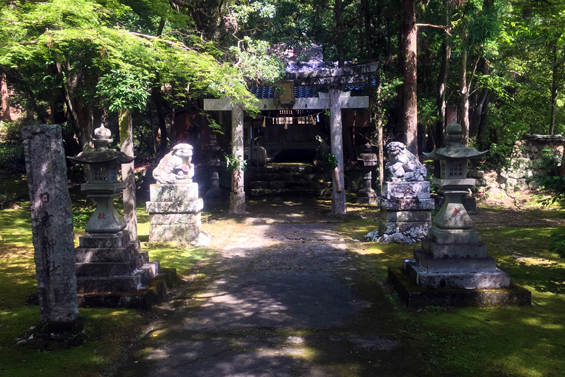
JAPAN SHOWCASE|Kochi Prefecture
Historical sightseeing in Kochi
Kochi, the southernmost prefecture on Shikoku, is famous for its Yosakoi dance, provincial, yet refined cuisine and lovely sand beaches, for a start.
Kochi is also noted for being on the trail of the Shikoku Junrei (Shikoku 88-temple pilgrimage) and for being the home of Sakamoto Ryoma, a famous revolutionary who remains a source of local pride. Many Japanese tourists visit Kochi each year, but the local government and tourist association have a new demographic in mind: visitors from abroad.
From Tokyo, a small jaunt to Kochi is easy, as JAL and ANA run several flights every day from conveniently located Haneda Airport, and the service of both airlines is impeccable even by international standards. I flew with JAL for a very short and pleasant trip. No sooner had I read a few articles from the in-flight magazine than we were making our descent at Kochi Ryoma Airport.

One initiative worth mentioning from the prefectural government is that foreign visitors can borrow a Wi-Fi router with unlimited access free of charge at the airport during their stay in Kochi — a digital helping hand sure to be appreciated by non-Japanese speakers.
Kochi Castle, designated an important cultural asset, is one of the last 12 fortresses that remain intact in Japan. It was the seat of the Tosa domain's government in the Edo Period (1603-1868) and thus housed many treasures that are now preserved and displayed in the Kochi Castle Museum of History. This building, inaugurated only a few months ago, is truly impressive and stands in front of the castle's main gate.

The museum offers an innovative system in that foreign visitors can connect smartphones or tablets to free Wi-Fi to get additional explanations regarding the exhibited pieces in several languages. The museum houses some 60,000 historical documents and treasures relating to the Tosa domain, its lords and other important figures of the region. The content of the exhibition changes regularly so that visitors can enjoy the entire collection over the course of repeated visits. Last but not least, the museum is scheduled to be open every day without interruption until 2019!
Another important historical site not to be missed is Chikurinji Temple. Founded more than 1,000 years ago, the temple is one of the oldest in the region, not to mention a stop on the Shikoku Junrei. Scattered around the temple are 88 small altars that allow visitors who don't have the time to complete the full trail (which spans some 1,200 kilometers) to go on a "mini pilgrimage." Another site peculiar to the temple is the presence within its precincts of a Shinto shrine. At the end of the 19th century, State Shintoism appeared in Japan, leading to a total ostracism of Buddhism. Under the haibutsu kishaku Buddhist persecution, temples were destroyed and religious texts burned. To save Chikurinji, people built this small shrine on its grounds and declared that the temple would now serve State Shinto.

Kochi is home to many more interesting historical sites and the municipal governments are working hard to improve access for foreign tourists. If anything above piques your interest, why not give it a go? After all, it's only 80 minutes from Tokyo.
For history buffs that can't make it out of Tokyo, the Edo-Tokyo Museum houses a must-see collection of historical artifacts, dioramas and full-scale reproductions depicting life in Japan's capital both during the feudal age and the modern era. A museum visit is very interactive, with many entertaining checkpoints created for both children and adults. Visitors can witness Tokyo life in the days of the samurai, then walk through the city's modernization and evolution over the course of the 20th century.

If you are interested in visiting the Edo-Tokyo Museum, please note that time is running out, as the whole building will close for renovations on Oct. 1. The museum will reopen at the end of March 2018, better prepared to welcome tourists visiting Tokyo for the 2020 Olympic Games.
Travel for this article supported by the Tokyo Metropolitan Government


